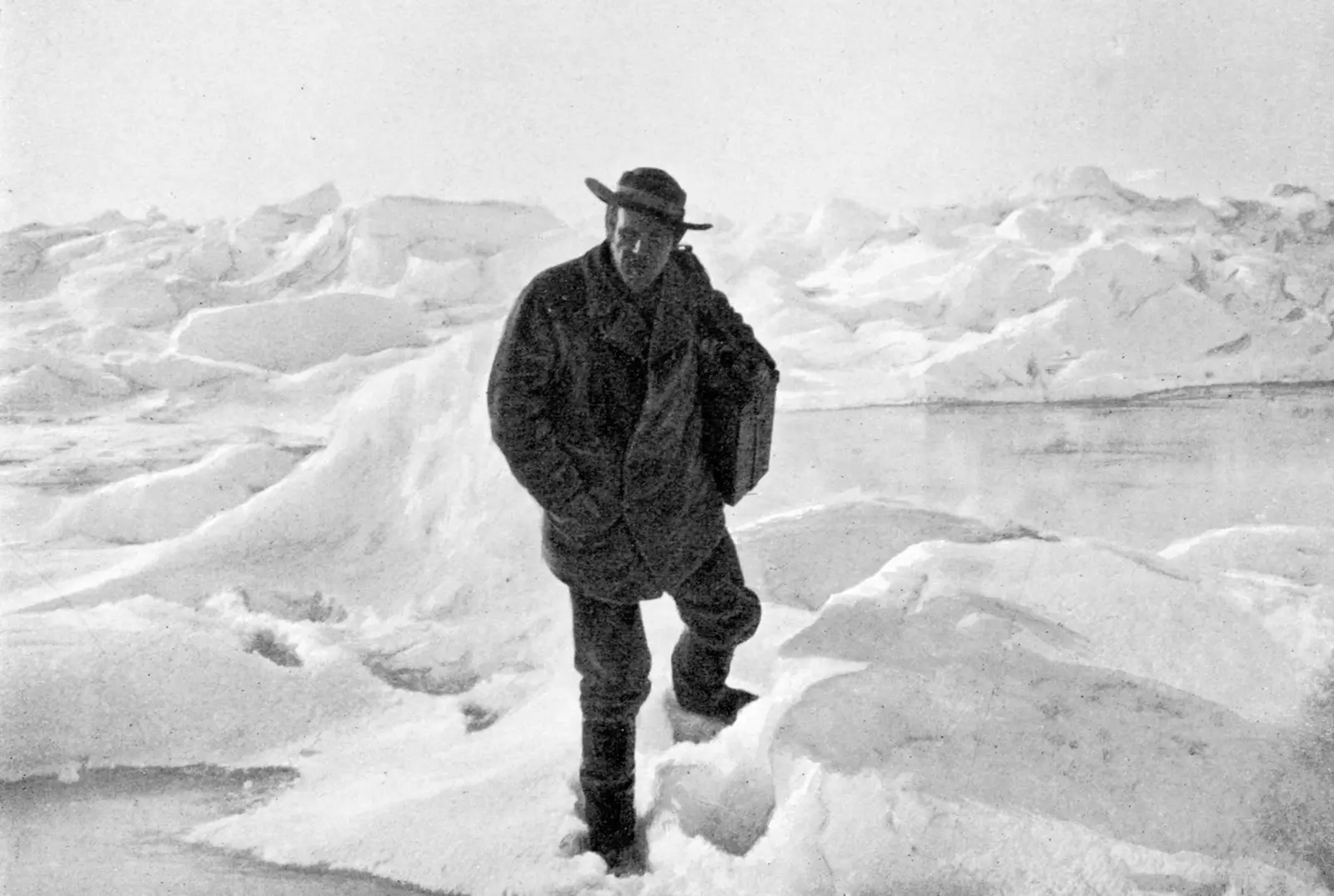
Nansen and the search for the North Pole
In these uncertain days in which we live, traveling has become a prohibited activity what should imagine, read, and plan ahead of time . Fighting the urge to move may be easier if we move to the adventures, dramas, rescues and adventures who had to face those who, entering the wonderful worlds of the explorer journey They dug paths at the cost of suffering and fighting spirit.
I would have liked to title this article “worst trip in the world” , but it was Robert F Scott , the second person to reach the South Pole , who thus baptized his own adventure in Antarctica. Spoilers: ended in tragedy , with Scott arriving behind the Norwegian Amundsen to the South Pole , and dying of hunger and cold when returning. This detail, the death of the protagonist, is what differentiates the fatality of the journey undertaken by the Norwegian Fritjof Nansen in 1893 , when he left Bergen in search of the mythological North Pole . Which of the two could be considered “the worst trip in the world”. Draw your own conclusions with the following article, and I invite you to play analogies: Nansen maybe should have stayed home.
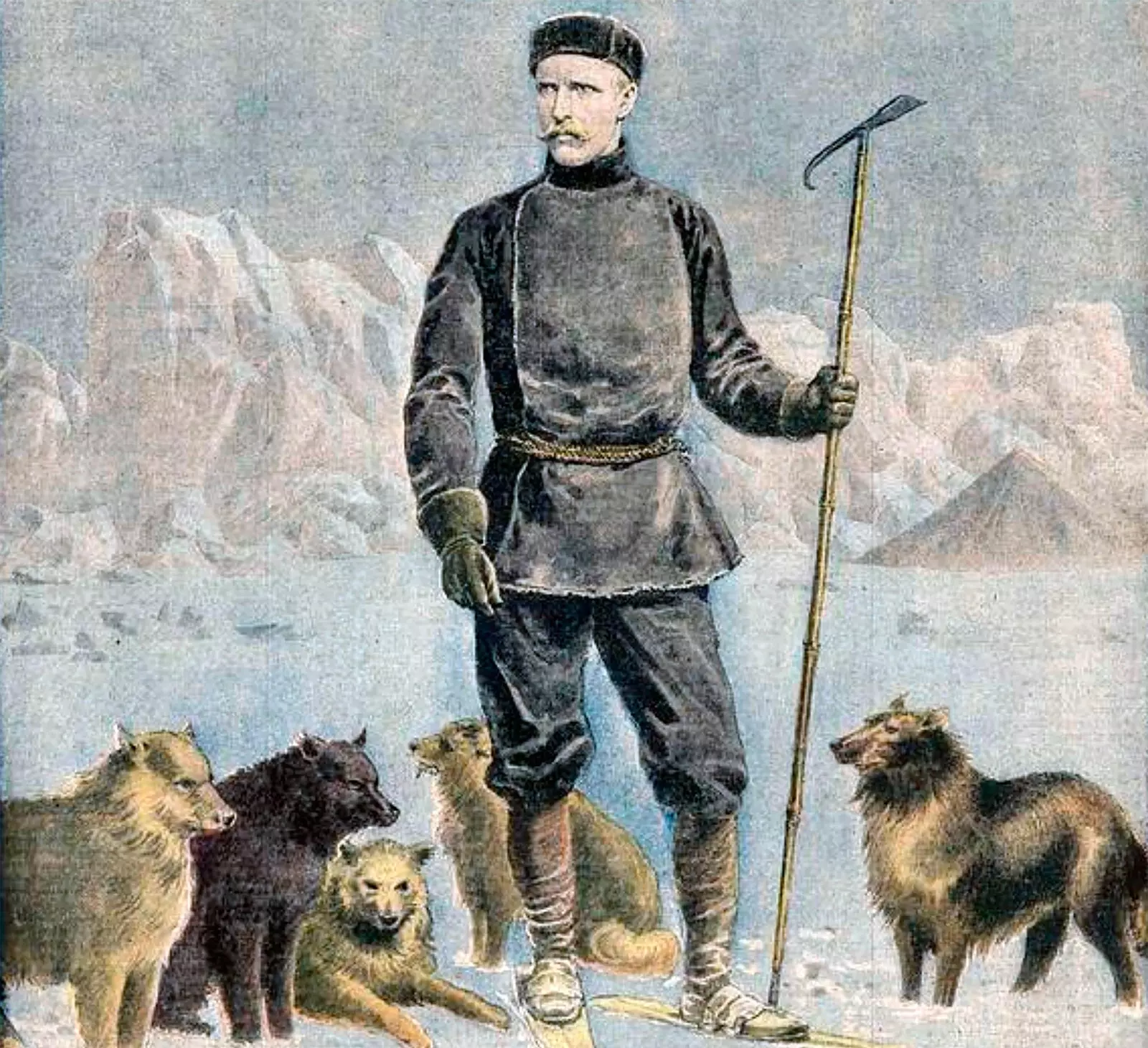
Nansen and the search for the North Pole
It all begins with a question asked in scientific circles in the United States, England, France, Germany, and Norway. Is the North Pole an island of land, an isolated continent permanently covered by ice, or is it a drifting pack of ice that from time to time launches huge icebergs like the one that sank the Titanic? In 1883, the Norwegian Fritjof Nansen, a twenty-three-year-old university student living in Oslo, and with great interest in geography and zoology of the polar regions, he points out that the Arctic can only be an ice pack. In England they treat him with condescension , and even in his own country they don't seem very sure of it. Nansen, however, has valuable information: the Greenland Eskimos had found adrift the Jeannette, a ship sent in 1881 by the American newspaper New York Herald, loaded with reporters who would die crushed by the Arctic ice. Three years later, the shipwreck resulting from that madness perpetrated by a director eager for exclusives was shown to the world 2,900 nautical miles from the place where the shipwreck happened: indeed, the arctic moved.
Obsessed with this observation, Nansen devoted the next five years of his life to study and prepare to prove your hypothesis: the arctic was a huge frozen sea . The Norwegian was a born athlete, expert skier who obtained the world record in cross-country skiing, who alternated university with the physical training necessary to survive the rigors of the Arctic. However, the stability gained after completing his university degree and joining the Bergen Natural History Museum caused him an anxiety that stemmed from his fixation on the North Pole. Leaving aside his work as a “smock” zoologist, Nansen put on skis in 1888 to accompany Otto Sverdrup and four brave Norwegians in exploring Greenland . They traveled five hundred kilometers through the infinite glaciers of the "green land", recorded in their notebooks temperatures of - 45 degrees , survived blizzards and bear attacks , and they had to seek refuge in the eskimo igloos , with whom Nansen lived for a year. Beside the inuit he learned the Survival techniques that they ended up convincing him that surviving the North Pole was possible: he only needed to return to Norway, and convince an engineer to build an indestructible ship.
Once in Oslo, just opened in 1890, Nansen looks in the mirror and sees in it a blond young man with penetrating blue eyes, who At only twenty-nine years old, he is already a Doctor of Science and a pioneer in polar exploration . With similar letters of introduction, the Norwegian exposes his ideas in various societies of intellectuals , millionaires passionate about science, and famous university professors. In England they received him again with lofty condescension , while Americans are slyly skeptical. Only Norway, his native country, seems willing to listen to him, and excited by the impetus of the young Nansen, they provide him with 25,000 Norwegian pounds to launch the conquest of the Arctic sea ice.
Obtained the capital, the explorer set out to obtain the means. He bought thirty-four Samoyed dogs, skis, groceries , and recruited a crew of twelve men who would travel on a ship, the frame , conceived and built to withstand the pressures of the sea ice when it freezes. Its hull, especially the bow, was reinforced with iron and steel, while its rudder could be folded back so as not to be trapped by the ice: it was a three-sail schooner that should, once anchored in the ice, show the world that the arctic was moving, and carrying Nansen to the northernmost point on earth.
Nansen departs from Bergen on June 24, 1893 , taking advantage of the thaw to travel to the mouth of the Lena river in Siberia . His intention is to be trapped by the ice as close as possible to the Pole, so taking advantage of the Northeast Passage, he gets the Fram to run into the ice at an altitude of 77º 14' North . The morning after the provoked jam, 660 kilometers from the North Pole, Nansen writes:
"24th September.
When the mist lifted, we found that we were surrounded by fairly thick ice… The region is dead: no life anywhere except a seal and recent grizzly bear tracks.”
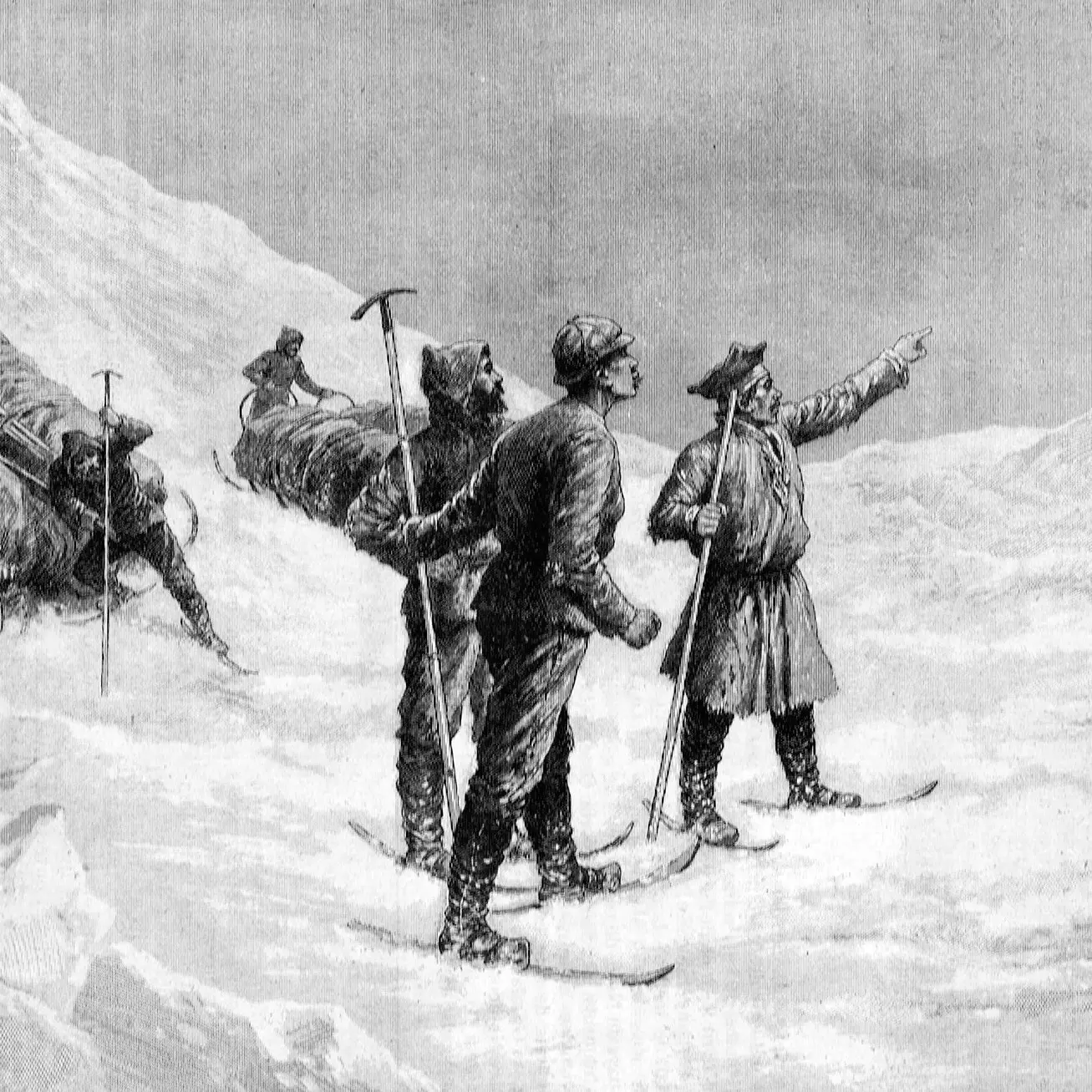
1897 illustration of Nansen's 1893-1896 expedition
Alone in the polar desert, the sailors prepare the Fram so that the ship can withstand the deadly embrace of the pack ice . Nansen works while the criticism leveled against him echoes in his head: the british joseph hooker , the last survivor of the James C. Ross expedition to Antarctica, predicted the ship was unserviceable , and that it would only resist the blockade if the ice did not exceed its waterline. Beyond was the American general adolphus greely , who disparagingly noted: “Nansen has no experience in the Arctic and leads his men to their deaths”.
The truth was that all the crew of the Fram had a good notion of the danger they faced : a ocean ice 3 to 4 meters thick whose immobility is only a mirage. Still no waves the polar sea ice is in constant fluctuation thanks to the tides, the wind and the ocean currents . This continual wandering brought about what Nansen's men feared most: hummocks , Eskimo name to name the ice ridges that rose when the edges of the ice blocks ( flowers ) were projected against each other, and broke forming slopes up to four meters high. These ice walls must have been responsible for embracing the Fram and transporting it north, showing that there was no land under the snow.
The wait, however, was agonizing, and between blizzards and freezing temperatures , the sailors witnessed how the ice went, little by little, wrapping the ship . Nansen narrates:
“The ice crashes and overlaps around us with a thunderous crash, piling up in long mounds and slopes higher than the Fram Bridge”
To make matters worse, the ice pack drags the Fram to the southeast, away from its target, the North Pole . Six weeks after the blockade, after enduring temperatures of - 40 degrees , Nansen sees the unattainable goal of the northernmost point of the globe more than a thousand kilometers away. The wandering of the ice, however, is reversed in December, and with the new year the Fram is located, in the middle of polar winter, in the same place where it was two months ago. Nansen and his men have spent a year in the Arctic , traveled 330 nautical miles in the arms of the sea ice, and have not yet managed to exceed the 85º north latitude.
The Norwegian, determined to achieve the primary objective of the expedition, does not lower his arms: accompanied by Hjalmar Johansen , a successful Olympian and good friend of Nansen, along with three sleds, two kayaks and twenty-seven dogs , start the race to the North Pole. They abandoned the Fram on March 14, 1895 , two years after the start of his journey from Bergen. Gone is the crew, trapped by a long winter in which would continue to take samples of temperature, depth and latitude . Meanwhile, Nansen and Johansen had to endure the elements lows of – 50 degrees , knowing that they would not find the ship aground on their return trip: the Fram would arrive in Oslo a year later, in the summer of 1896.
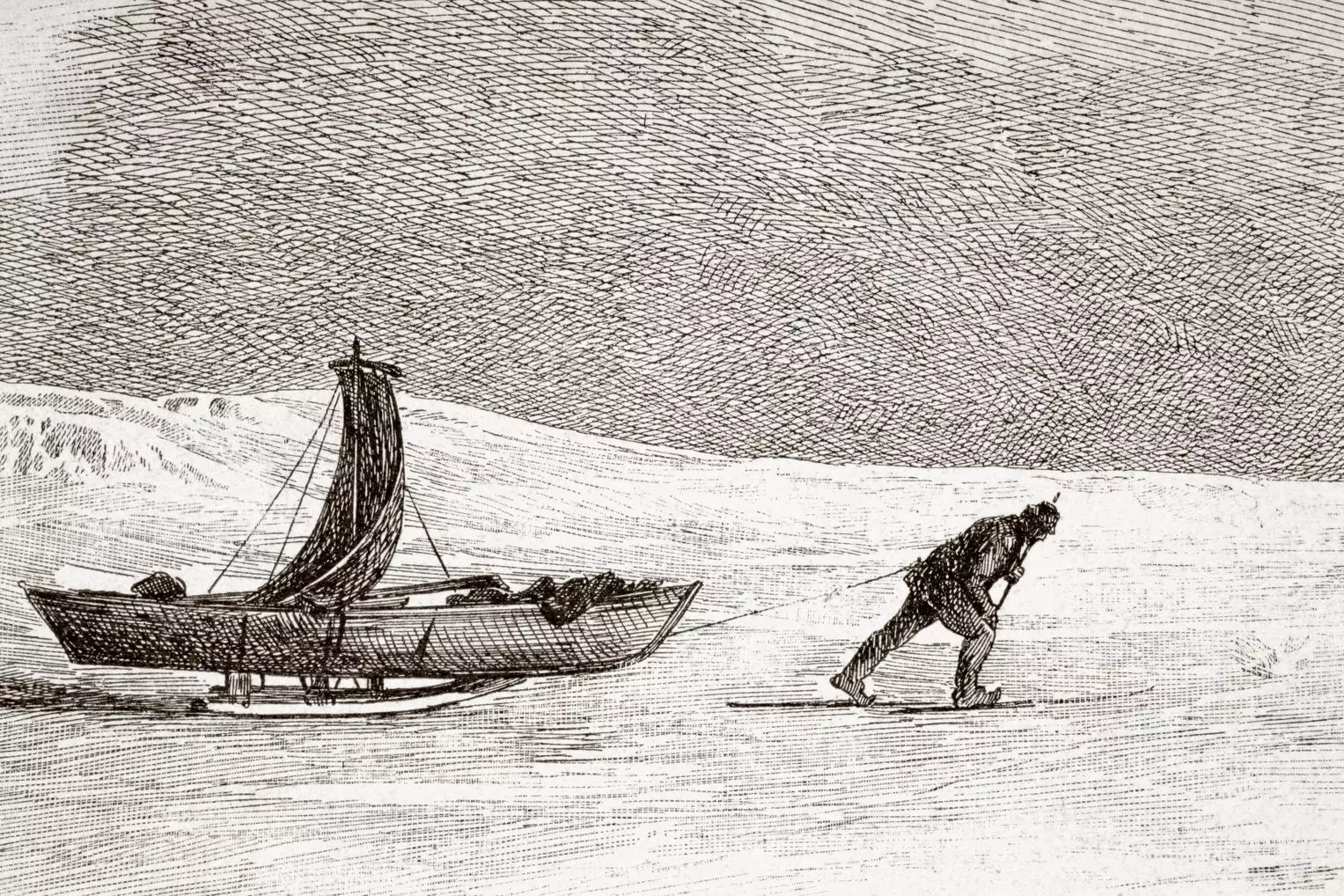
Hjalmar Johansen and Nansen, walking on the ice in search of the North Pole
Nansen and Johansen never thought to return to the Fram : his direct destination was the pole, and later, the islands of Franz Josef Land, Front of russian siberia . The itinerary totaled 1852 kilometers between crevasses, hummocks, white bears and frigid temperatures , and Nansen hoped to be able to face it in four or five months. The Norwegians are loaded with provisions for a hundred days; according to the harsh law of the arctic, the dogs would be executed as they went to serve as food for the others . The first stage, 667 kilometers to the invisible point that marked the North Pole, becomes eternal. April 8 , three weeks after leaving the Fram, Nansen and Johansen realize to their frustration that they are at only 86º and 3 'north latitude : they have needed three weeks to travel only 87 kilometers, delayed by the continuous detours caused by the presence of very high ice slopes and the movement in a southerly direction of the sea ice: they walk without moving on a white treadmill.
Unmotivated, the Norwegians decide to turn around and head for the mainland. Franz Josef Land is 666 kilometers from their position, and during the two months it takes to traverse the frozen plains of the Arctic, they must cross numerous channels aboard their kayaks , carrying dogs and material several times a day to continue advancing, indefatigable, towards the mainland.
July 24, 1895 Nansen writes in his diary:
"After two years, or almost, we see something above that white line of the horizon."
Land in sight : In the northwestern corner of Franz Josef Land, Nansen and Johansen run into a islet nicknamed Eva - Liv, in honor of the wife and daughter of the former. They have two dogs left, although luckily, seals and bears abound in the archipelago and will hunt to regain strength and dress in their skins . One of them will come very close to killing Johansen, who was miraculously saved by the Nansen's accurate shot . The days were an ordeal, and the goal of returning to Norway in the shortest possible time became his only obsession: on August 4, lined in bearskin coats and laden with dried seal meat, the explorers tie their kayaks together, like a Polynesian catamaran, and they set out to cross the Franz Josef archipelago.
They sail for three weeks in a south-westerly direction, traveling 185 kilometers between icebergs and surviving the attack of a walrus . Despite his efforts, arctic winter comes in august , and it will be at the end of this month of the year 1895 when Nansen and Johansen are surprised again by the ice pack in the jackson island . Resigned to spending another winter in the Arctic, the explorers decided prepare a shelter as comfortable and impassable : They built a shelter dug into the ground, covered with a mixture of stones, moss and walrus skins that would isolate the interior during the black winter months.
From September to May they remained locked up , in a frigid quarantine where his only distraction was the sporadic visits of the white bears. It was, however, a pleasant winter, and Nansen records in his diary that he even gained weight from eating walrus meat . Revived by the comfort of their refuge on Jackson Island, the Norwegians set out on May 19, 1896 for the Spitzbergen archipelago , at the edge of the ice, hoping to find someone alive. The search is unsuccessful, and the travelers doubt how far they have advanced, and if those islands so similar to the ones they have left behind are not the same ones they thought they had abandoned.
For three weeks they sail along the coast of Spitzbergen, shaken by snow storms that make each day a white hell: no trace of life , nor is seen beyond the flakes of the blizzard. The good spirits obtained during the winter seem to evaporate along with the ice that is getting thinner. Suddenly, a walrus lunges at her catamaran and rips a hole in one of the kayaks, soaking her clothes and supplies. Exasperated, they will seek refuge on the coast: the Arctic is one step away from defeating them.
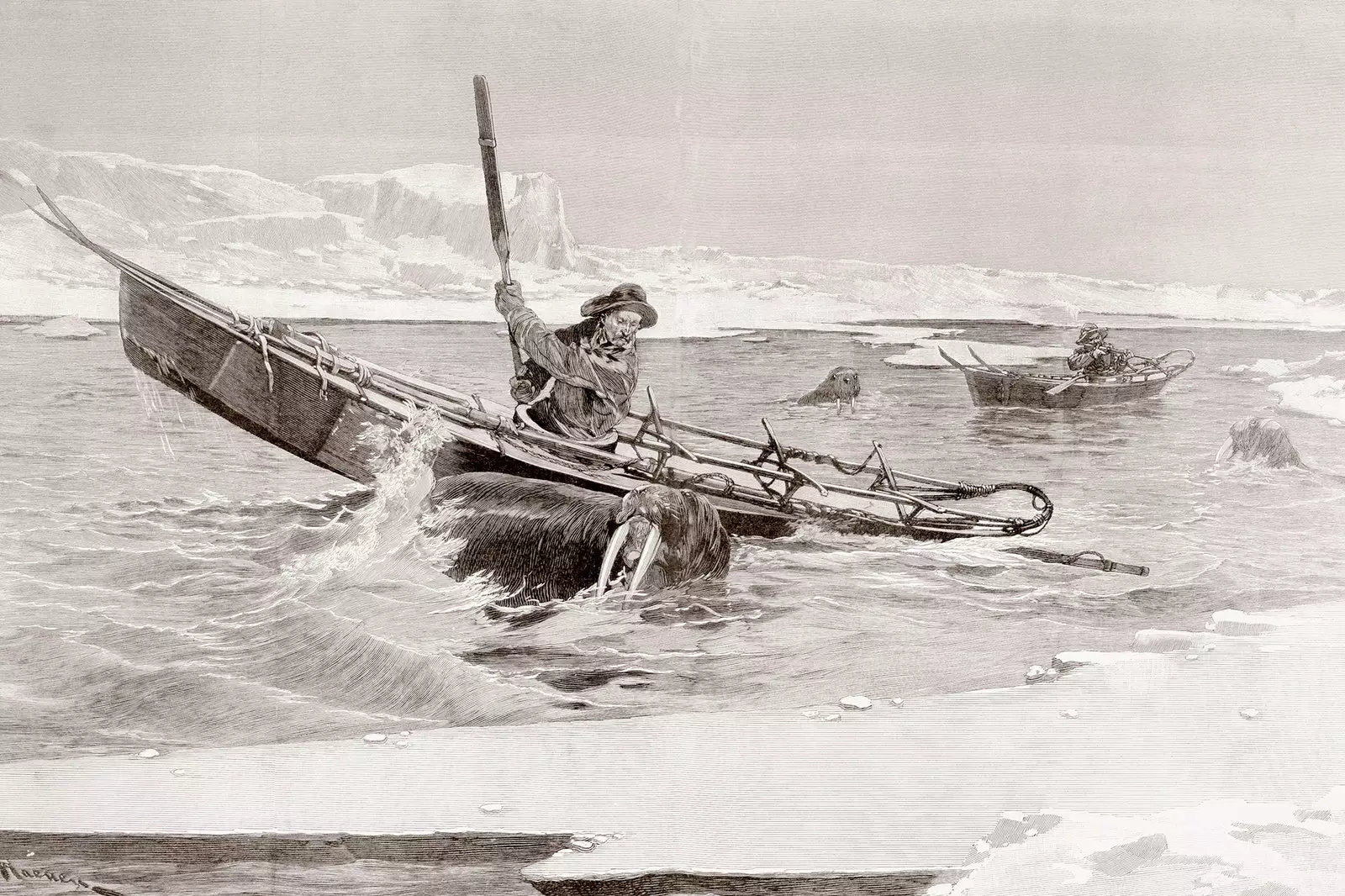
The attack of the walrus
On June 17, Nansen, locked up with Johansen in a makeshift shelter, he thinks he hears a dog barking . Then he clearly distinguishes the voice of a man. Who will walk through the remote snows of the Arctic in the middle of summer? intrigued, Nansen puts on his skis and sets off in search of the owner of that dog. . The Norwegian narrates the encounter thus:
"I see a man in the distance. I wave my hat, and so does he. Then we shake hands. On one side, a clean-shaven, civilized European in an English sports suit and rubber boots; on the other, a savage dressed in dirty rags , black with grease and soot, with long hair and a shaggy beard."
The English gentleman is called Frederick Jackson , and like a Stanley who finds his own Livingston , Jackson greets Nansen with a polite, “Aren't you Nansen? By Jove, glad to see you!” And both shook hands starring in an image that was immortalized the next day by the photographer who accompanied Jackson. Two months later, Nansen and Johansen were in Oslo, where they were received as heroes by the population , and between hugs by the former crew members of the Fram.
This concludes the second worst trip in the world . Now that we know Nansen's epic, perhaps we could argue that Robert Scott was not attacked by walruses and white bears nor did he have to fight in a motionless walk against the fluctuations of the ice pack. The conquest of the North Pole served to lay the foundations for future expeditions to Antarctica , Y Roald Amundsen, winner of the race between Norway and England for the conquest of the South Pole , took careful note of Nansen's methods in preparing for his own expedition. The Norwegian armed himself with Siberian dogs, as did the young zoologist from the Fram, this detail being what would mark the success of his expedition; Scott, who trusted the British ponies, would end up starring, this time, the worst trip in the world.
Author's note: for readers interested in polar explorations, the bibliography used in this article has been:
IMBERT, B. The great challenge of the poles . Universal Aguilar, Madrid, 1990.
Nansen, F. Farthest North . Birlinn Limited, Edinburgh, 2002.
SALE, R. Polar Reaches: The History of Arctic and Antarctic Exploration . Mountainer's Books, Seattle, 2002.
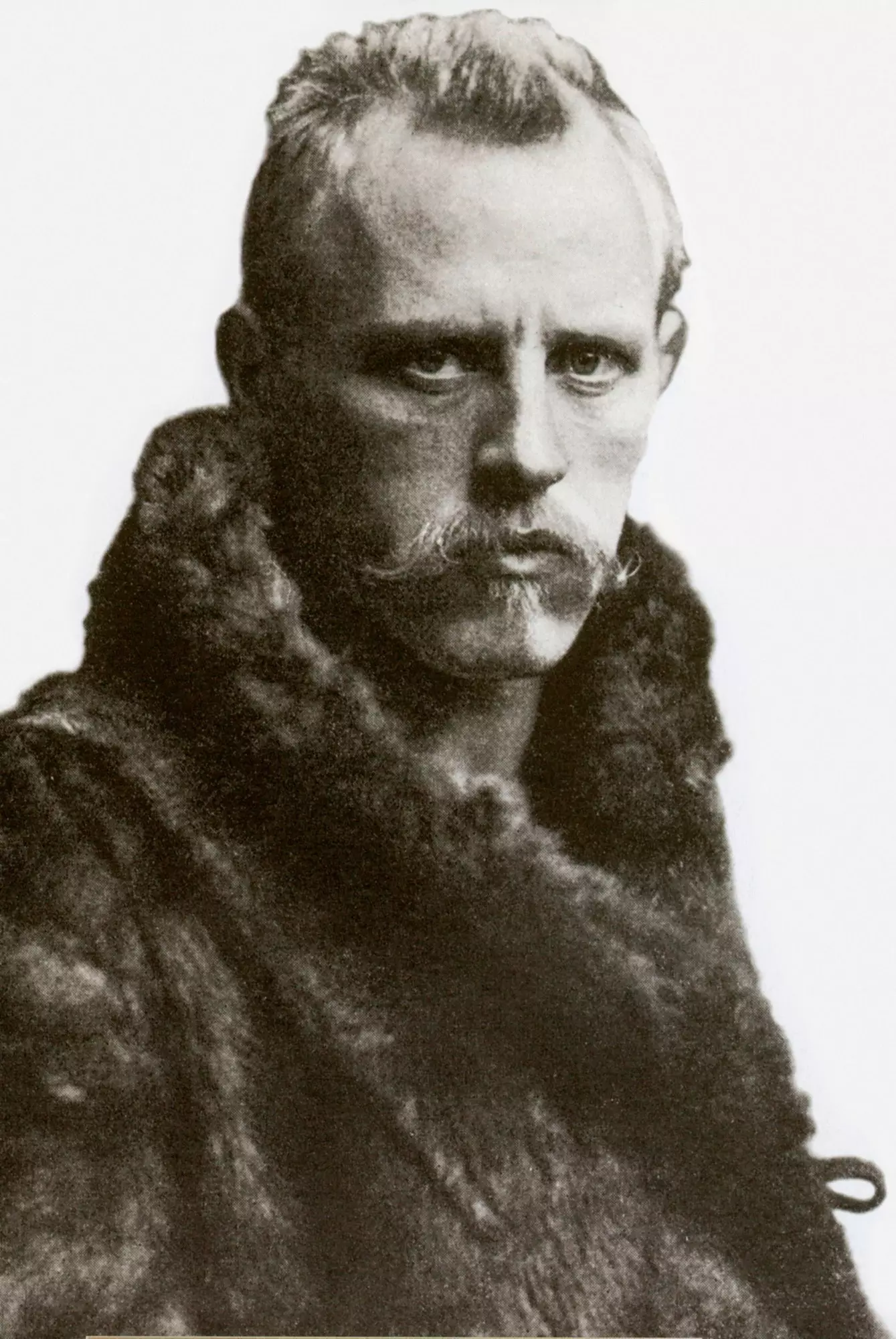
Fritjof Nansen
